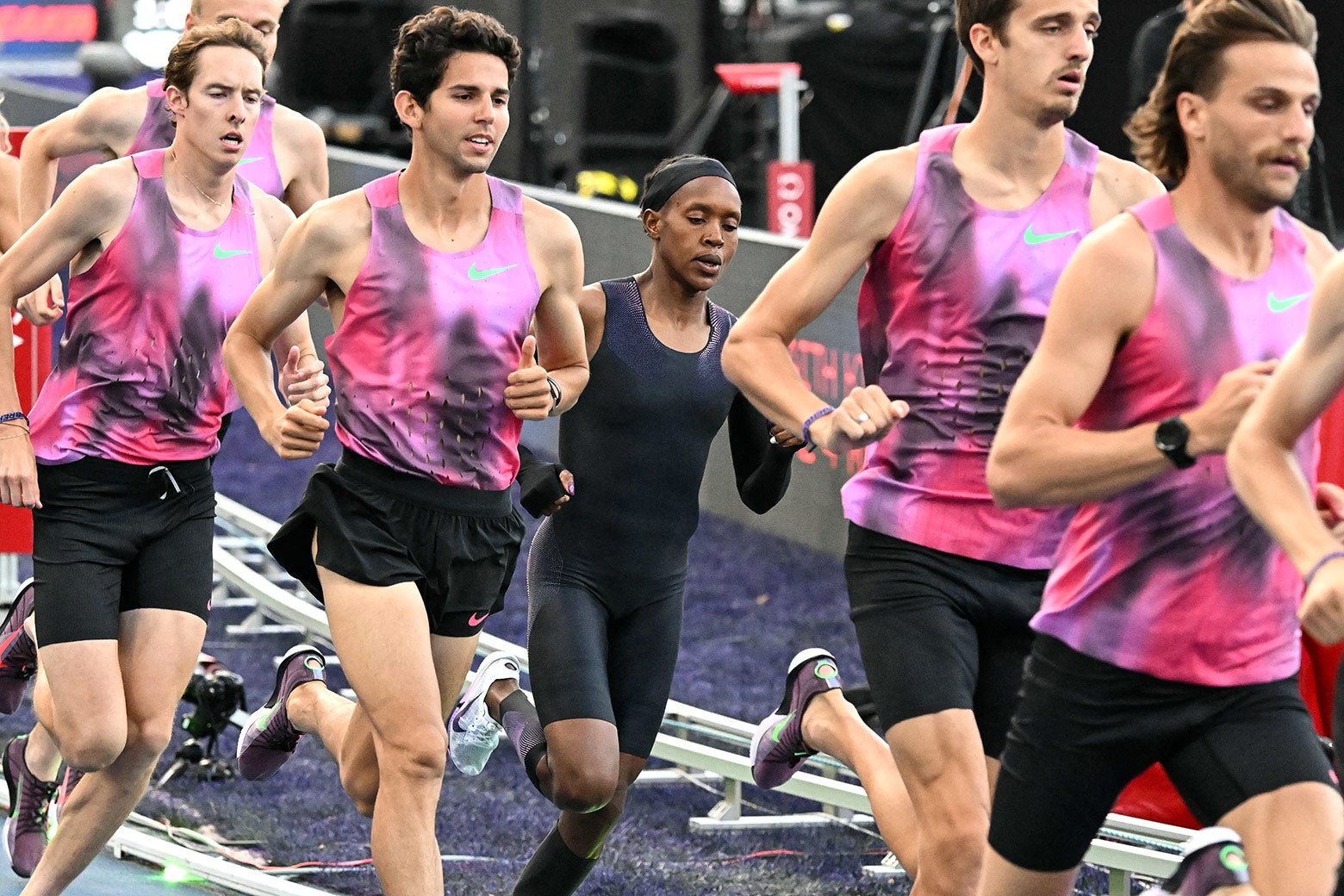On Thursday in Paris, Faith Kipyegon attempted a feat no woman has ever achieved: running a mile in under four minutes. While she didn’t succeed, this event has become a revealing case study in the intersection of sports marketing, media dynamics, and scientific interpretation.
Earlier this year, a scientific study posited that Kipyegon could potentially run a 3:59.37 mile, given perfect conditions and drafting from pacers. The study was clear about its assumptions—ideal conditions and Kipyegon being at her peak form, akin to her 2023 world record of 4:07.64. Despite these caveats, the narrative spun by media and Nike’s marketing suggested an imminent breakthrough.
The Role of Media and Marketing
Following the study, Nike orchestrated a high-profile event, framing it as a historic moment in women’s sports. The media coverage, however, often overlooked the study’s limitations, creating an impression that Kipyegon was on the verge of breaking the barrier. This narrative was bolstered by Nike’s marketing, which emphasized their proprietary gear as a catalyst for this potential achievement.
However, a more conservative analysis published in April, co-authored by a Nike scientist, warned that current data were insufficient to suggest an imminent sub-four-minute mile. This study, notably absent from Nike’s promotional materials, highlighted the gap between marketing narratives and scientific realities.
Understanding the Challenge
Kipyegon’s attempt, while valiant, fell short by over six seconds. In elite running, where fractions of a second are crucial, this gap is significant. The transition from a 4:07.64 to a sub-four-minute mile represents more than a 3% improvement—an enormous leap in elite sports.
Comparatively, Eliud Kipchoge’s sub-two-hour marathon required only a 1.6% improvement. The expectation that Kipyegon could achieve double this improvement through aerodynamic tweaks and new gear was, in hindsight, overly optimistic.
Scientific Promises vs. Public Perception
The event’s buildup was marked by a narrative that science would render the impossible possible. Now, with the attempt falling short, questions arise about the accuracy of scientific predictions. This pattern of inflating scientific promises for marketing purposes, only to retreat when reality doesn’t align, can erode public trust in scientific research.
“Sometimes you have to change the rules for people that are special. … We have to find a way to let the world see her excellence,” said Carl Lewis during the broadcast.
Lewis’ comment, intended as praise, inadvertently underscored a troubling narrative: that women’s achievements require exceptions to be recognized.
The Implications for Women’s Sports
This event highlights a persistent paradox in sports: the celebration of women’s achievements often occurs within a framework defined by male standards. When women’s sports are measured against male physiology, it undermines the genuine progress and achievements of female athletes.
Nike’s marketing positioned Kipyegon as “brave” for attempting a likely unattainable goal. However, celebrating athletes for attempting what is physiologically improbable risks patronizing them rather than honoring their actual accomplishments.
Ultimately, this was less about Kipyegon’s personal aspirations and more about a corporate narrative aiming to sell products by crafting a story of potential triumph against long odds.
Reflections and Future Considerations
As the dust settles, the question remains: what truly inspires? Kipyegon’s solo sprint to a 4:07 finish, widening the gap from the world’s fastest women, stands as a testament to her prowess. This moment, unencumbered by external expectations, is where her excellence truly shines.
The conversation moving forward should focus on respecting and celebrating women’s sports for their unique achievements, rather than comparing them to male benchmarks or creating unrealistic expectations through marketing narratives.
